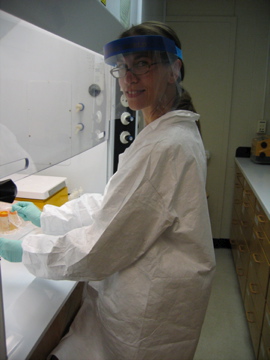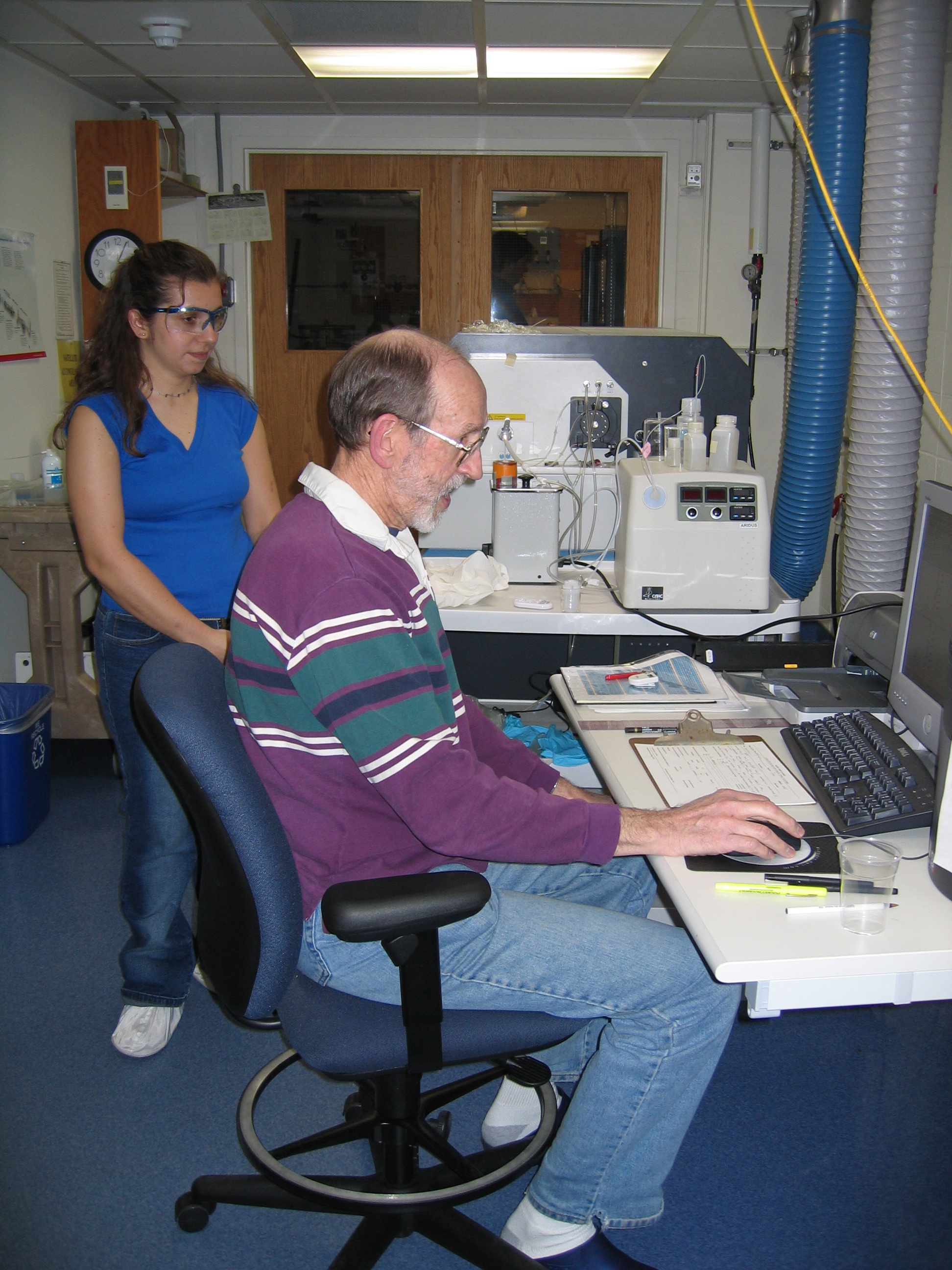Black shale weathering
Black shales and other sediments enriched in organic matter are the most important crustal reservoirs of organic carbon. These sediments are deposited in marine and continental settings under reducing conditions.
Redox-sensitive elements (uranium, rhenium, molybdenum, osmium, cromium, selenium) are often enriched in reducing sediments. When organic-rich sediments are exposed to oxygen, they undergo dramatic changes. Pyrite breaks down in the early stages of oxic weathering, releasing sulfurous acid to the environment. Organic matter is converted to carbon dioxide and/or released as dissolved or particulate organic matter to streams and groundwater. Redox-sensitive metals are mobilized to various extents and enter streams and groundwater, sometimes in high (toxic) concentrations. Elements generally considered far less mobile (e.g., thorium) can be mobilized due to the acidic conditions caused by pyrite oxidation and the availability of abundant organic ligands.
Our group has been interested in the effects of black shale weathering on radiogenic isotope systematics, specifically the rhenium-osmium and uranium-thorium-lead systems, since 1997. Postdoctoral scholar Robyn Hannigan compared time-equivalent pairs of unweathered and weathered Ordivician black shales to investigate the mobility of platinum group elements (PGE) and rhenium (Peucker-Ehrenbrink & Hannigan, 2000, Geology 28, 475-478). She found that weathered shales had lost a signficant fraction of their intial PGE inventory. Summer student fellow Lillie Jaffe (UCSD) expanded on this study by investigating a weathering profile in New Albany Shale that is beautifully exposed in a 1960 road cut near Clay City in Kentucky. This site has been the focus of detailed organic chemistry investigations by Bob Berner's group at Yale University, specifically Steve Petsch. Steve (then a PDF at WHOI with Katrina Edwards, now at UMass Amherst), Research Associate Dan Rogers and I visited the outcrop in 2000 to supervise a drilling company recovering drill cores from the outcrop. Lillie's results demonstrate the dramatic changes in the rhenium-osmium system that are caused by oxic weathering. She found that the apparently still reducing portion of the outcrop (with abundant pyrite) are enriched in Re that had been mobilized, presumably from overlying horizons undergoing oxic weathering, and reprecipitated below under reducing conditions. The most weathered portions of the profile not only show complete loss of pyrite, signficant loss of organic carbon, but also nearly complete loss of rhenium and moderate loss of radiogenic osmium. The rhenium-osmium isochron of the shales has been nearly completely reset by these processes (Jaffe et al., 2002, EPSL 198, 339-353).
In collaboration with Ken Sims, Nobu Shiumizu, Graham Layne and MIT/WHOI Joint Program student Christian Miller, we have also evaluated the usefulness of uranium-thorium decay series nuclides in dating the weathering process and quantifying elemental loss/gain rates. Differential mobility of uranium, thorium, radium and protactinium cause disequilibrium in the decay chains that can be used to determine the rate at which the oxic weathering front migrates into the interior of the outcrop. Once these rates are determined, release rates of other elements can be calculated. Results from this study have been presented at the 2002 Spring AGU meeting and the 2002 Goldschmidt Conference.
Partners/Collaborators
Christian Miller (MIT/WHOI JP), Lillie Jaffe (SSF 2000), Robyn Hannigan (WHOI PDF 1997-1999), Ken Sims (WHOI), Prof. Steve Petsch (UMASS Amherst)

Summer Student Fellow Lillie Jaffe (UCSD), dressed up for trace metal work, in one of the WHOI clean laboratories in the Clark building.

Dave Schneider and Tracy Atwood analyze platinum group elements on the ThermoFinnigan Element2 ICPMS. (BPE)